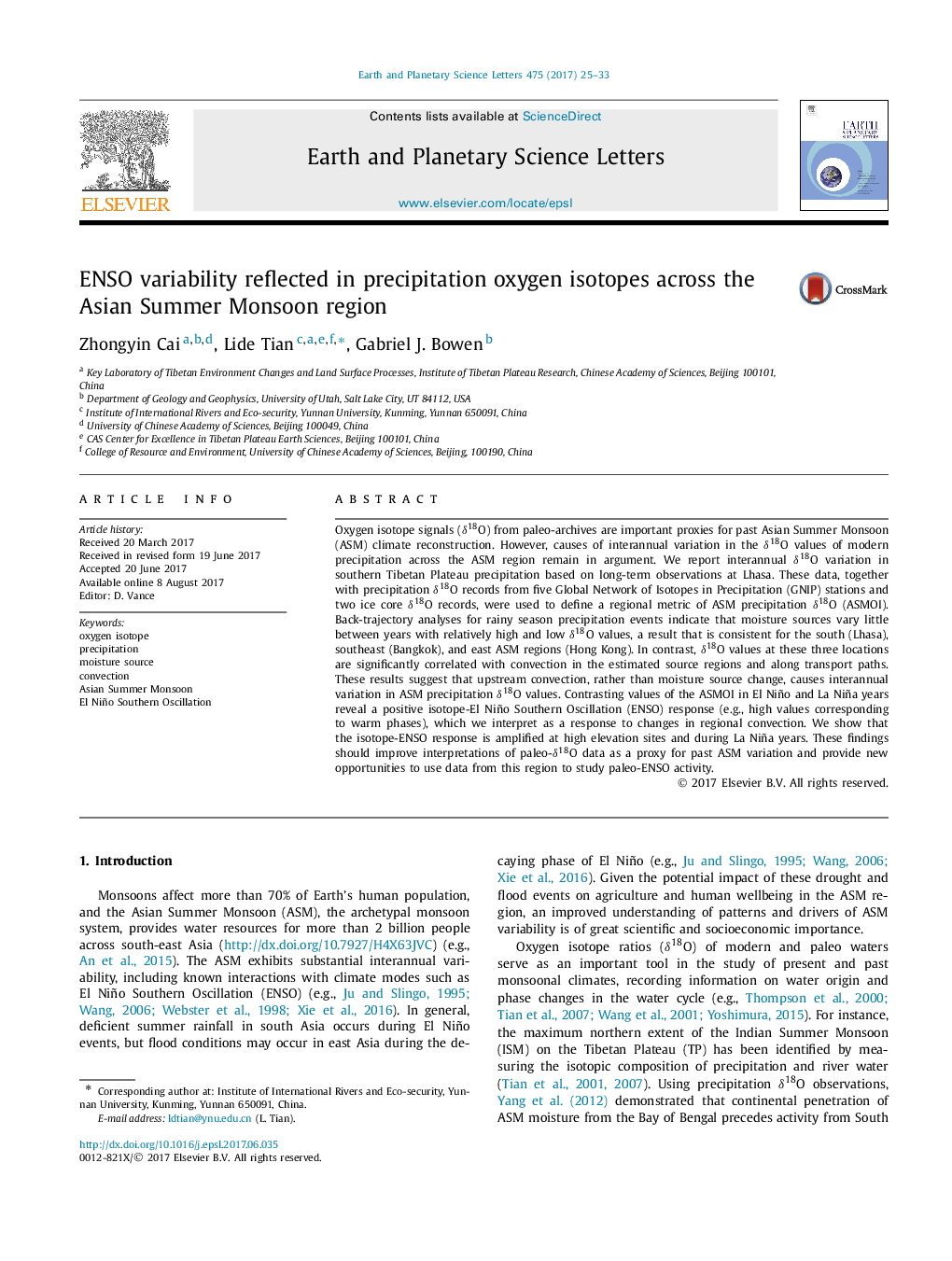| Article ID | Journal | Published Year | Pages | File Type |
|---|---|---|---|---|
| 5779653 | Earth and Planetary Science Letters | 2017 | 9 Pages |
â¢Strong ENSO signal in precipitation δ18O across Asian Summer Monsoon region.â¢Moisture sources are comparable whether δ18O has very high or low values.â¢Î´18O values are correlated with convection over moisture source regions.â¢A regional δ18O metric shows more robust ENSO expression than individual records.â¢Amplified δ18O-ENSO response on high elevation sites and during La Niña years.
Oxygen isotope signals (δ18O) from paleo-archives are important proxies for past Asian Summer Monsoon (ASM) climate reconstruction. However, causes of interannual variation in the δ18O values of modern precipitation across the ASM region remain in argument. We report interannual δ18O variation in southern Tibetan Plateau precipitation based on long-term observations at Lhasa. These data, together with precipitation δ18O records from five Global Network of Isotopes in Precipitation (GNIP) stations and two ice core δ18O records, were used to define a regional metric of ASM precipitation δ18O (ASMOI). Back-trajectory analyses for rainy season precipitation events indicate that moisture sources vary little between years with relatively high and low δ18O values, a result that is consistent for the south (Lhasa), southeast (Bangkok), and east ASM regions (Hong Kong). In contrast, δ18O values at these three locations are significantly correlated with convection in the estimated source regions and along transport paths. These results suggest that upstream convection, rather than moisture source change, causes interannual variation in ASM precipitation δ18O values. Contrasting values of the ASMOI in El Niño and La Niña years reveal a positive isotope-El Niño Southern Oscillation (ENSO) response (e.g., high values corresponding to warm phases), which we interpret as a response to changes in regional convection. We show that the isotope-ENSO response is amplified at high elevation sites and during La Niña years. These findings should improve interpretations of paleo-δ18O data as a proxy for past ASM variation and provide new opportunities to use data from this region to study paleo-ENSO activity.
